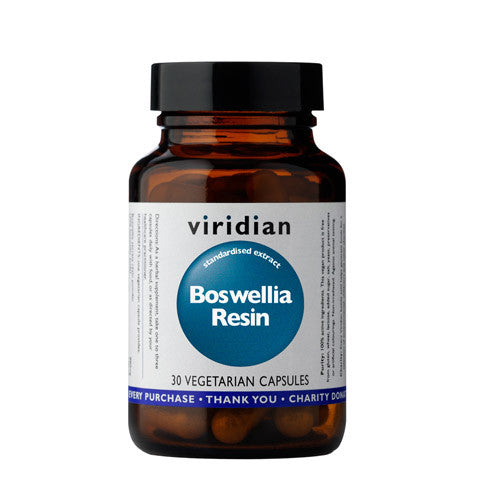Magnesium Could be the Missing Link To Reducing Nation's Back Problems
Did you know that a reported incredible five billion pounds a year is lost from the UK’s already crippled economy due to employee time off work reporting some form of back pain?
There can be many reasons for back pain, such as physical injury or trauma, for example, whiplash from a sudden jerking of the neck or back. However, a little known cause could well be a simple deficiency in magnesium, a key mineral that tends to be greatly lacking from the average, often over processed, acidic forming British Diet. Strangely, after all the many mainstream medical breakthroughs, we often still consider that there is little we can do to improve this condition, other than the very positive step of seeing a good acupuncturist, osteopath or chiropractor.
We may be taking painkillers to manage the back problem or we might even be taking anti-inflammatory drugs or an array of other prescription drugs. Whilst this manages the pain to some extent, its impact on the body is to deplete the body’s precious reserves of magnesium and to a certain extent, potassium. In fact, drugs such as paracetamol taken long term can actually cause pain. In addition, these medications may act as a diuretic and remove other important electrolytes, or macro minerals, such as sodium (salt) and calcium (often over prescribed in the UK). As the body will naturally try to preserve sodium, and our diet is awash with calcium, the levels of the other (more important in our opinion) alkaline minerals, potassium and the lesser-known magnesium, become in short supply.
A concoction of prescribed drugs and the wrong convenience food choices can all lead to a greater demineralisation in our bodies over time, or excessive hoarding of one in particular - sodium. This will make us more acidic and thus less flexible because these electrolytes control the movement of both refreshing clean and toxic water in and out of our cells (Often referred to as the Sodium potassium pump). The human body is reported to be 62% H20, so this process is constantly making a major contribution to our body’s overall health. A simple example of this would be children, who on the whole are still more alkaline than adults and are far more flexible than we are as adults, (they always say children bounce back quicker than us!). On the other hand, as we become senior citizens, we tend to accept that we may become ever more immobile due to a lack of flexibility. In naturopathic terms, this is acidic toxicity, (which is very inflammatory – often leading to dis- ease or as it is better known now as disease). As you have realised, it did not happen overnight! It is a process which builds up over many years. We might think we cannot do anything about it but, in fact, we can go a long way to improve the process. For a start, we can look to ways of detoxifying the body, by consuming a more alkaline diet, keeping diuretic drinks (tea, coffee, soft drinks and alcohol) to a minimum, keeping sodium (salt) to a minimum and drinking plenty of filtered or bottled water daily. We should be drinking approximately two pints daily, no more than a pint in any one-hour, ideally sipped throughout the day. It should not be gulped and is best taken lukewarm, not cold.
So tell me more about magnesium?
There are three possible aspects to this, as magnesium is a truly multifunctional nutrient, often overlooked to our detriment. Lack of magnesium has far reaching consequences, as it can affect bone health, the vascular system and muscular and connective tissue health, amongst other crucial functions.
Addressing the matter of bone health first, the spine is a fundamentally important part of our skeletal structure. Its age-related decline with conditions such as osteoporosis could be limited radically, just by increasing magnesium. Magnesium works antagonistically with calcium, a mineral that is often being spouted as crucial to bone health, which it is but not to excess! Yet, the integrity of bone matrix is critically dependent on magnesium as well, and without it, calcium can be misplaced throughout the body, such as in the joints, soft tissue, arteries and the cardiovascular system generally. The calcium/magnesium imbalance is often what leads to stiffening and hardening of muscles and connective tissue, as the high calcium levels are not only serving to contract the muscle tissue, but the excess calcium will be dumped wherever it can be placed. More often than not, it is placed everywhere, except in the bone where it should be.
As if this was not enough evidence that we need to concentrate on increasing our magnesium levels rather than calcium, since we are constantly being told to increase our dairy intake to bolster our calcium supplies. This advice is flawed on two points. Firstly, calcium may not be the problem and secondly, dairy produce is both acidic and mucous forming. Any mucous forming foods limit the absorptive abilities of the gut, so that nutrients such as magnesium just pass through the body without being properly absorbed. The integrity of the gut is a key issue and it is wise to ensure it is protected with a good probiotic. The acidity issue is one that applies to a great deal of our diet, particularly ‘heavy’ foods such as red meat. The more acid our diet becomes, the more calcium is utilised to dampen down the acidity in order to make the body more alkaline. More often than not, this will be drawn from the bones. You have to wonder why we are still suffering from fractures due to osteoporosis, when we have a diet that contains an average of 970mg of calcium, more than our RDA of 800mg, particularly coming from acid-forming dairy sources! If we wish to increase the alkalinity of our diet, we should look to green leafy vegetables, seeds and nuts. The green vegetables are also a highly absorbable source of calcium, far preferable to that of dairy products. However, it is worth being aware that due to the declining nutritional quality of our over-farmed soils and the over-processing of our foods, many of our food supplies may not be yielding as much magnesium as we need. Indeed, DEFRA reported in 2000 that the average British Diet now only delivers 267mg of magnesium daily, compared to an official RDA of 375mg/d. Thus, there is a slow decline in this important mineral that is still not being addressed.
The second aspect of any magnesium deficiency that may affect our back health is that of the muscles supporting the spine. According to the late Mildred Seelig, author of The Magnesium Factor, there should be more than 10,000 times the concentration of intracellular magnesium ions to that of calcium ions. If magnesium levels fall for any reason, it causes a flood of calcium ions to enter the cell (Seelig and Rosanoff, 2003). This has two major effects. Firstly, the cell becomes hyperactive, which is particularly noticeable with the cardiovascular cells, which need to react fast to stressful situations. This is fine in a truly stressful situation of ‘fight or flight’, which mobilises the body to escape the stressor. The heart races, the blood vessels dilate or constrict according to whether they are needed or not, and muscles can contract in order to make that escape. However, if all of this is not to make good an escape, then the result is worrying palpitations, a stiffening of the blood vessels and muscular cramps. Seelig also noted that the excessive intracellular calcium with low magnesium considerably alters the cell itself. The stiffening of the cells in blood vessels is often because of calcification, (again, the calcium dumping due to low magnesium!) which impedes proper function of the vessels. There may be dysfunctional blood flow, most importantly in the main blood vessels of the body, but also those serving the muscles of the body, including those of the back.
Obviously, the third aspect to this has been covered, and that is the matter of muscular contraction. However, it is nevertheless an important point. Calcium works against magnesium when it comes to muscular function. As we flex our muscles, calcium is instrumental in causing the contraction. Magnesium then ensures that the muscle relaxes. Without the effects of magnesium, the cell is constantly in a state of excitability, constantly contracted and affecting the pain receptors in that area. What is more, there is an increase in free radicals, which needs magnesium and other antioxidants for damage limitation. It is interesting to note that calcium has recently been linked to a 30% increased risk of a heart attack. Given the above information, it is easy to see why!
As with many things, people often feel pain more when they are stressed. Magnesium can make a huge impact on reducing stress, because of the reduction in muscle tension; this is the main ingredient in the bath salts sold to help us unwind! Seelig purports that magnesium reduces the level of a pain transmitter found in the nervous system, called substance P. Where it comes to a magnesium deficiency affecting our stress levels, it is easy to get caught in a Catch 22 situation, as stress levels use up magnesium more rapidly, setting up more pain and stress! If back pain is exacerbated by stress, magnesium is an excellent way to provide relief.
So what can we do to help ourselves?
We can, of course, start to alkalise our diet with green leafy vegetables, preferably organic, with the addition of nuts and seeds. Almonds are a particularly good source of magnesium. For true alkalinity, it is best to juice the raw vegetables, but if this is unpalatable to some, then steaming the vegetables retains the magnesium. An alternative is to have freeze dried supergreens or sprouted green barley in powder form. This can be added to smoothies, which can also contribute to alkalising the body. If vegetables are boiled, then the water should be retained to keep the magnesium. As an element, it is not altered by cooking, unlike the vitamins, but it is often lost down the plug! Another strategy is to reduce acid-forming foods such as meat and dairy, and concentrate on sprouted seeds and nuts. Meat can be substituted with avocado as part of a salad, which is not only has high magnesium to calcium ratio, but also has high potassium content too. It is also advisable to reduce diuretic coffee, tea, soft drinks like cola and any drinks containing caffeine. This is because they are not only acidic but also very dehydrating. It is important to insure against dehydration, as any signs of dehydration will also have a contracting effect on the body. This naturally leads on to the subject of water intake, which should roughly be two to three pints, sipped throughout the day. Although this will improve levels, it simply may not be enough. Bearing in mind the lower yield of magnesium in our food sources, we need to increase the green stuff considerably or choose a potent supplement with high bioavailability. Magnesium is absorbed well, when it is taken in conjunction with B vitamins and essential fatty acids. The fatty acids can be taken as flax seed oil (suitable for vegetarians and vegans), Fish Oils or even better, Krill oil. Huperzine






